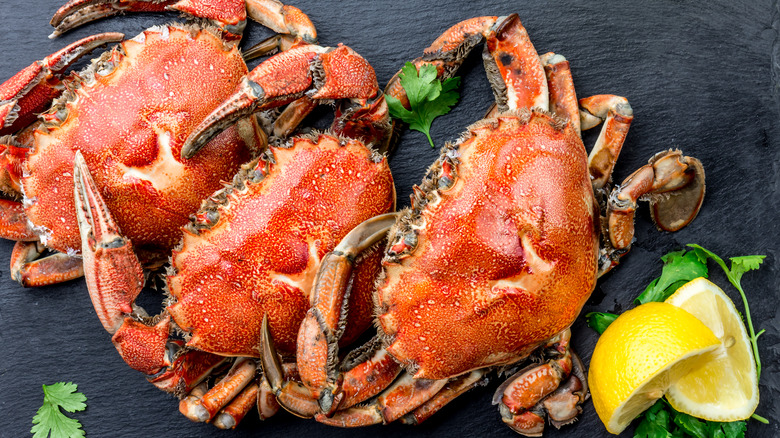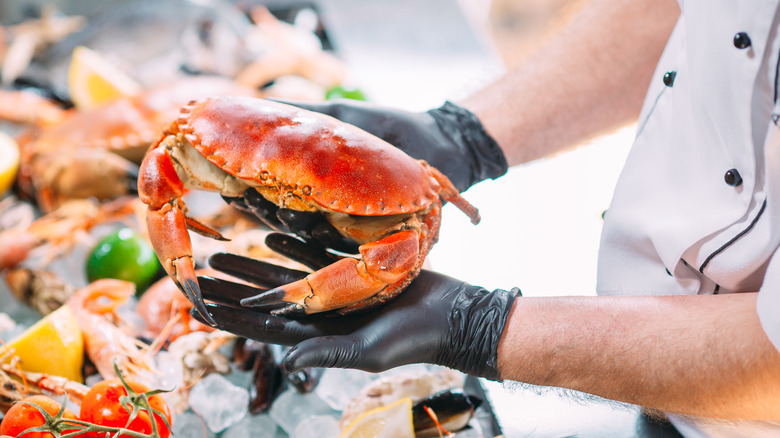Why Do Crabs Turn Red When Boiled?
While you could easily undercook chicken or steak without realizing it, crab is a lot harder to mess up. That's because all it takes to determine whether it's done or not is some basic observation skills. Fresh blue crab is blueish gray, but after a few minutes in boiling water, it turns a vibrant shade of red. At that point, you know it's just about time to take it off the heat. But how does such a drastic color change occur?
According to Food & Wine, it's a result of a chemical reaction. The shells of crustaceans, such as crab or lobster, are made up of a special pigment that absorbs blue light. This pigment, also known as astaxanthin, is contained within a membrane called crustacyanin. While the astaxanthin is still in the crustacyanin, the crab appears blue. But when exposed to heat, the astaxanthin breaks free from the crustacyanin. This activates the pigment and turns the shell red, giving cooked crab its characteristic color.
Why do crabs have astaxanthin?
From king crab to snow crab, there are many varieties of crustaceans that make for some delicious seafood dishes. But for as many different types of crabs that exist, they're all typically either blue, brown, or gray in color. Only some crabs have shells with a hint of red, but it's only in certain lighting (via Food & Wine).
As The Conversation explains, these colors help crabs camouflage with the ocean floor. So then why do crabs' shells even contain astaxanthin, a red pigment that would make crabs stand out to predators? The Conversation says it's likely a vestigial trait left behind as crabs evolved over time.
Crabbing Hub further elaborates that the exact explanation remains unknown, however, astaxanthin isn't entirely useless. The pigment has similar properties as algae, so it prevents parasitic organisms from latching onto crabs' shells. That means without astaxanthin, not only would cooked crab look a lot different, it would also be unsafe to consume on account of all the parasites.

